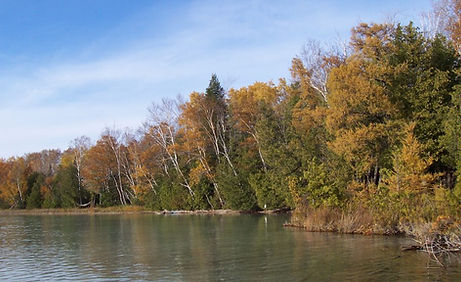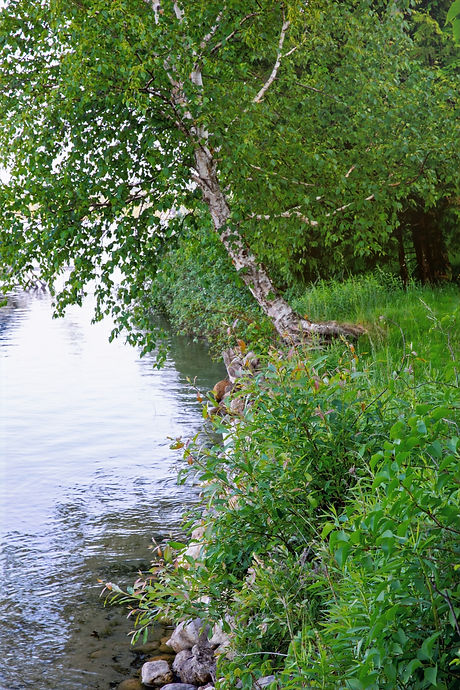
Shoreline Preservation
Shorelines are Critical Transition Areas from Land to Water
A natural shoreline protects the lake and provides habitat for fish and wildlife. However, intense shoreline development, the proliferation of turf lawns, and an increase in waves from boat activity create erosion problems and allow fertilizers and pesticides to enter the water. You can restore your shoreline to a more natural state which will support wildlife habitat and prevent run-off.
Create a Greenbelt
A greenbelt is a natural shoreline of diverse and native vegetation including trees, shrubs, grasses, and wildflowers that grow naturally or are planted.
The most important benefits of greenbelts are erosion control and pollution filtering. By keeping sediments and excess nutrients from washing into the water, greenbelts keep the water clear and cool. An added benefit is deterring geese who prefer well-manicured lawns with unrestricted access to the water.
Recent surveys, revealed a concerning deficiency in natural shorelines and greenbelts surrounding Lime Lake. The good news is that this is within our control.

Schedule Your Free Lake On-Site Consultations
To encourage establishing and enhancing greenbelts on the lake, the LLA is supporting on-site consultations by our Lake Biologist, Kelsey Froelich. During the half-hour consultation, you will gain a deeper understanding of the natural process and science that a natural shoreline plays in the health of the lake ecosystem. Site specific opportunities will be discussed so you can create a greenbelt plan for your shore.


Education - Not Enforcement
Greenbelt consultations are focused on providing an understanding of the natural processes and their effect on lake health. In other words, education.
We are giving riparians the information to make the changes they deem appropriate to improve lake health while providing space for water accessibility and recreation. The decisions are left to the property owner - and the LLA has no interest in ‘enforcement’!

Tips for Your Shoreline
-
Maintain a greenbelt - a 20 to 35’ natural buffer along 70% of your shoreline to help provide filtration to trap pollutants, prevent overgrowth of aquatic plants and algae, reduce erosion and discourage geese.
-
Use native plants - shrubs, trees and grasses to stabilize shorelines which provides habitat for wildlife (more).
-
Plant native trees to help offset storm damage and replace die-off of diseased ash, birch, beech and oaks.
-
Use a mulching mower, compost leaves and yard trimmings at least 100 ft from surface water. Excess leaves in the lakes and creeks degrades water quality.
Rate Your Shore

